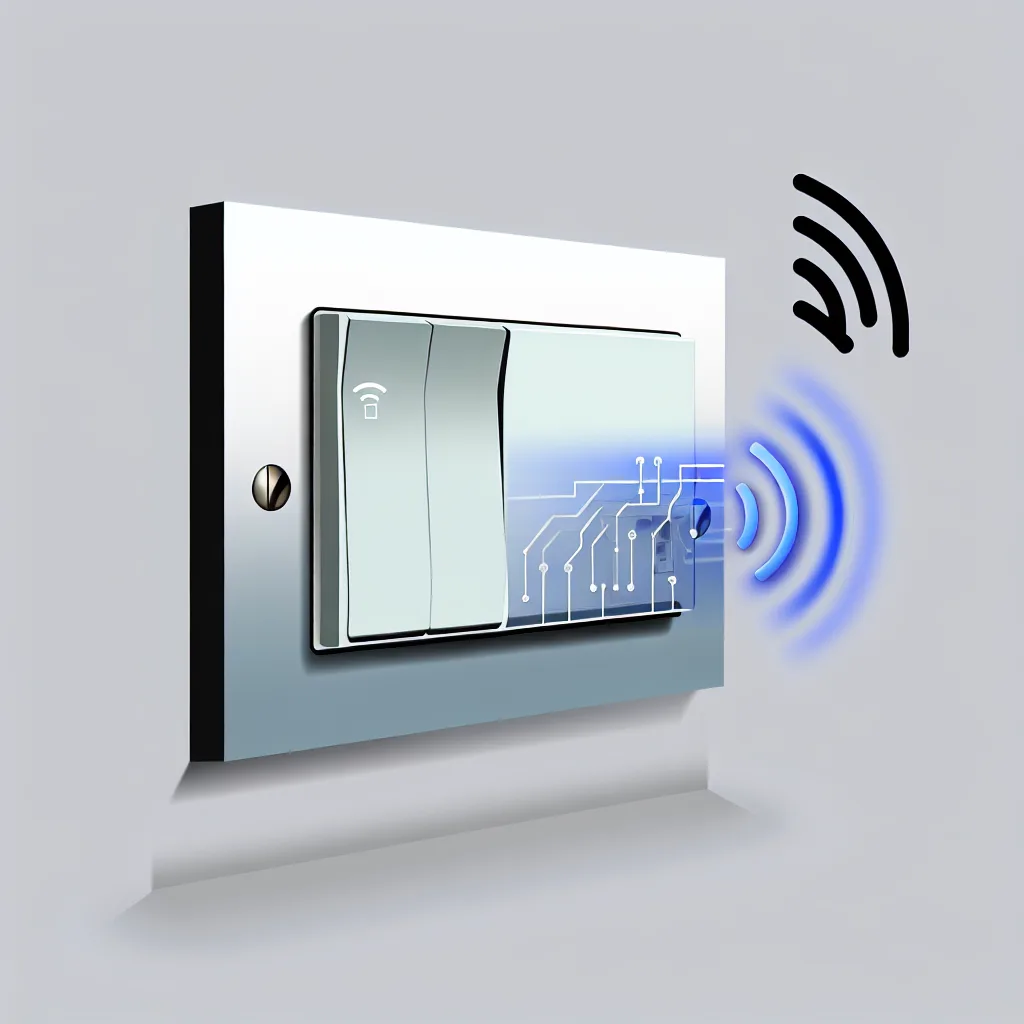You’ve got wires in your walls. So why do all your smart switches insist on using wireless? Let’s untangle the real story behind smart switch technology.
So, you’re standing in the aisle, or maybe scrolling endlessly online, looking at smart switches. You see boxes talking about Zigbee, Z-Wave, Thread, Wi-Fi… it feels like you need a degree in wireless engineering just to turn on a light. And then a simple, brilliant thought pops into your head: “Wait, the switch is already connected to wires. Why can’t it just send the data through the power line?”
It’s a fantastic question. On the surface, using power line communication (PLC) seems like the most logical solution in the world. The infrastructure is already there, snaking through the walls of your home. It feels like it should be more stable than Wi-Fi, which can get spotty two rooms away from your router. So why isn’t it the standard? Why are we messing with all these wireless signals when a perfectly good wired path already exists?
The short answer is that your home’s electrical wiring is an incredibly noisy and chaotic place, and for most manufacturers, it’s just not worth the headache. Let’s dig into why that is.
What is Power Line Communication Anyway?
First, let’s be clear on what we’re talking about. Power line communication is a technology that sends data over the same copper wires that deliver electricity. Think of it like this: the electricity is the steady, powerful flow of a river, and the data is a series of tiny, coded ripples traveling on the surface of that river. A device on one end creates the ripples, and a device on the other end reads them, all without interrupting the main flow of power.
This isn’t some futuristic fantasy, either. The technology has been around for decades. You might have even used it without realizing it. Those powerline Ethernet adapters that let you extend your internet to a back room using an electrical outlet? That’s PLC in action.
The Promise: Why PLC Seems Perfect for Smart Switches
The appeal of using this for a smart home is obvious.
- No new wires: The network is already built into your house.
- No wireless interference: You wouldn’t have to worry about your microwave messing with your light switch’s Wi-Fi signal.
- Potential for reliability: A wire is a wire. It should be more stable than a signal floating through the air, right?
In a perfect world, this would be the elegant, simple solution. But our homes are far from perfect electrical environments.
The Reality: Why Wireless Wins Out
The dream of a simple, wired smart home network crashes pretty hard against the reality of how residential electrical systems work. Here are the main reasons why that “simple” idea is actually incredibly complex.
1. Your Walls Are Full of Electrical Noise
The biggest villain in this story is electrical noise. Your home’s power lines are not clean, quiet pathways. They’re more like chaotic highways filled with interference. Every time you turn on a blender, a vacuum cleaner, or even plug in a cheap phone charger, it injects “noise” onto the electrical lines.
This noise can easily drown out or corrupt the tiny data signals that a smart switch would be trying to send or receive. Designing a PLC chip that can reliably filter out all that chaos from every possible appliance is extremely difficult and, more importantly, expensive. A standard Zigbee or Wi-Fi chip is much cheaper and simpler to implement.
2. The Circuit Breaker Problem
In most homes, the electrical system is split into multiple circuits, all starting from your main breaker panel. A PLC signal can have a very hard time crossing from one circuit to another. The signal has to travel all the way back to the panel and then jump to the other circuit. This jump often weakens the signal so much that it becomes unusable.
So, a smart switch in your bedroom (on one circuit) might not be able to talk to a switch in your kitchen (on another circuit). That’s a deal-breaker for creating a cohesive smart home.
3. It’s Not as Secure as You’d Think
Believe it or not, your electrical lines don’t necessarily end at your house. They connect to a shared transformer with several of your neighbors. In some cases, especially with older PLC technology, your data signals could potentially “leak” over to your neighbor’s house. While modern tech has improved this, it’s still a security consideration that wireless protocols, with their robust encryption, handle much more cleanly.
Is Power Line Communication Completely Gone?
While it’s not the mainstream choice, PLC hasn’t vanished entirely. Some high-end, professionally installed home automation systems still use it. One of the most well-known protocols is the Universal Powerline Bus (UPB). These systems are typically more robust (and more expensive) and are designed to handle the challenges of noisy electrical lines, often installed by technicians who know how to mitigate the issues.
But for the average DIY smart home enthusiast, the industry has clearly voted. The cost, flexibility, and ever-improving reliability of wireless standards like Wi-Fi, Zigbee, and Thread have made them the undeniable winners. They’re simply easier and cheaper to make, easier for us to install, and good enough for the tiny amounts of data a light switch needs to send.
So next time you’re setting up a smart device and choosing a wireless protocol, you’ll know why. It’s not because manufacturers forgot about the wires in your walls; it’s because they decided that the airwaves, for all their quirks, were a much friendlier place for your smart home to live.
